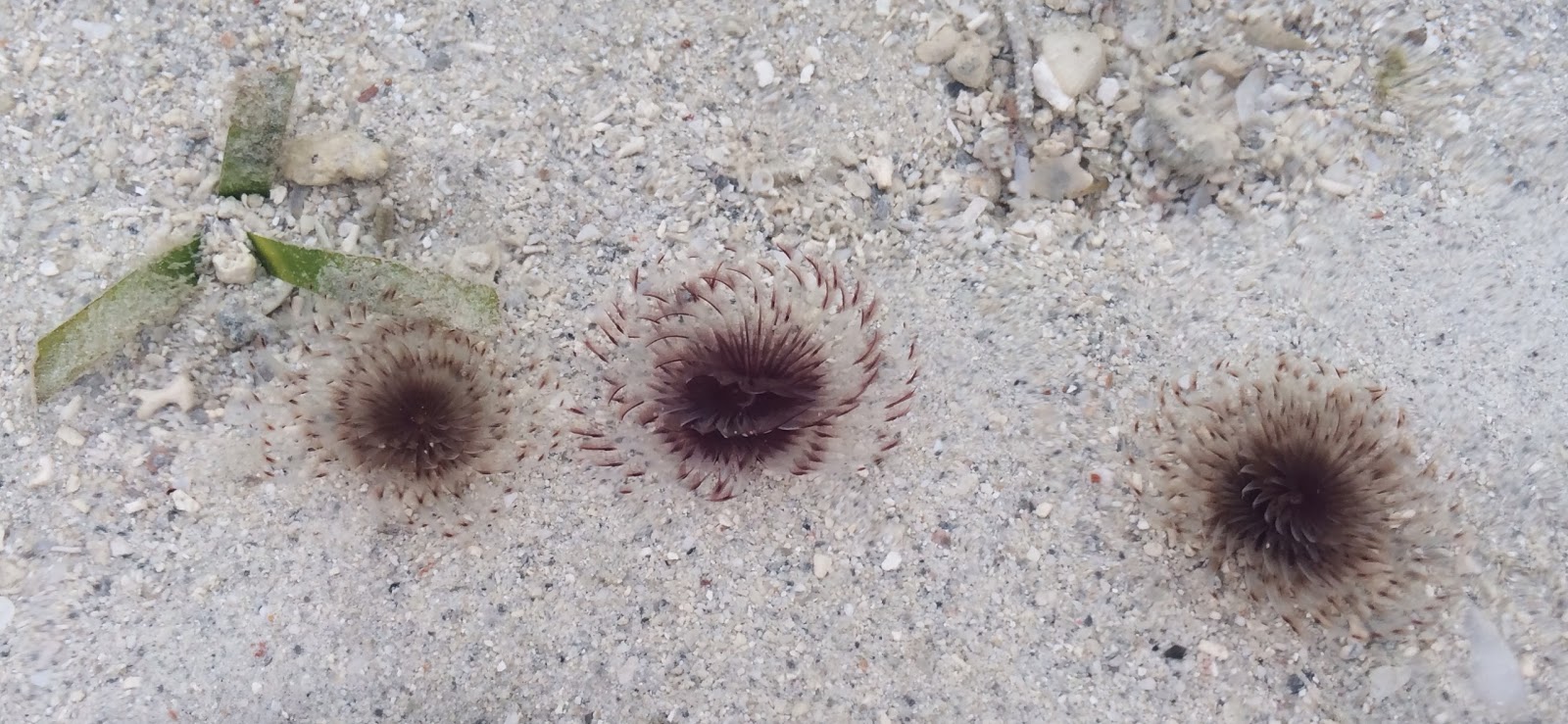On our first morning on Havelock Island I woke early to watch the sunrise as the tide was just coming in around 5:30 am. The DIVEIndia crew was already starting to load scuba gear into their boats.
I could have spent many days exploring the white sand beaches, turquoise waters, and tidal flats at Beach 3. At low tide we walked way out to the edge of the tide on soft, moist sand. It was easy to be mesmerized by the blue waters and expansive horizon, but there was so much to see at our feet.
The tidal flats are home to thousands of worms, and likely hundreds of species. I was fascinated by their castings--some looked like coiled rope and others like chimneys.
The feather duster worms were stunning. They are mostly hidden under the sand, only extending their feathery feeding appendages above the water. They pull them quickly and completely back under the sand when disturbed. When I stood still they re-emerged.
I saw a small gobi fish, a sea anemone, a sand dollar (the bleached skeleton of a sea urchin), and holes lined with small shells (I don't know who was living there).
In one area we discovered many black sea cucumbers--these sausage-shape, 8-inch long creatures were much more beautiful than their name suggests.
Here is a hand-sized cushion star and gooseneck barnacles that were attached to a slender bamboo that had washed up on shore.
And then there were the hermit crabs--these are the life of the beach along the high tide line. They spend a lot of time among the wrack, feeding, looking for new shells. Since they have soft bodies (no shell of their own) they seek out other vacant shells, occupying different sizes and shapes depending on their own size. Large shells (we're talking about 1 inch in size) are uncommon so there is great competition. Several hermit crabs will crowd around a newly vacant shell and trade shells depending on their size. Sometimes they fight over them. The smallest hermit crab was smaller than the fingernail on my little finger.
I could have spent many days exploring the white sand beaches, turquoise waters, and tidal flats at Beach 3. At low tide we walked way out to the edge of the tide on soft, moist sand. It was easy to be mesmerized by the blue waters and expansive horizon, but there was so much to see at our feet.
The tidal flats are home to thousands of worms, and likely hundreds of species. I was fascinated by their castings--some looked like coiled rope and others like chimneys.
The feather duster worms were stunning. They are mostly hidden under the sand, only extending their feathery feeding appendages above the water. They pull them quickly and completely back under the sand when disturbed. When I stood still they re-emerged.
I saw a small gobi fish, a sea anemone, a sand dollar (the bleached skeleton of a sea urchin), and holes lined with small shells (I don't know who was living there).
In one area we discovered many black sea cucumbers--these sausage-shape, 8-inch long creatures were much more beautiful than their name suggests.
Here is a hand-sized cushion star and gooseneck barnacles that were attached to a slender bamboo that had washed up on shore.
And then there were the hermit crabs--these are the life of the beach along the high tide line. They spend a lot of time among the wrack, feeding, looking for new shells. Since they have soft bodies (no shell of their own) they seek out other vacant shells, occupying different sizes and shapes depending on their own size. Large shells (we're talking about 1 inch in size) are uncommon so there is great competition. Several hermit crabs will crowd around a newly vacant shell and trade shells depending on their size. Sometimes they fight over them. The smallest hermit crab was smaller than the fingernail on my little finger.
The 2004 tsunami and recent cyclones have caused some damage to the coastline and to the trees. Remnants of these effects are seen in the large tree trunks lying on the beach.
We spent 2 1/2 days on Havelock--not nearly enough time
to absorb all the beauty and explore all the natural places.


















No comments:
Post a Comment